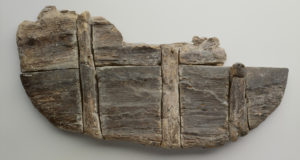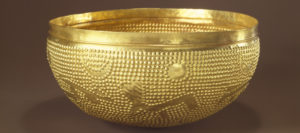
The wheel
Who invented the wheel? Historians still debate this point today. And the Zurich region is in the running to claim the honour. Wheels dating from the Neolithic period have been found here.
‘Reinventing the wheel’ or ‘being the third wheel’. Numerous sayings revolve around the wheel. But who invented this simple and yet indispensable tool, without which we would really be stuck? When was it introduced and, most importantly: could it be possible that it was invented more than once?
Some answers to these questions can be found – who would have thought it? – in Zurich where, during excavations in the Seefeldstrasse area in the 1970s, the remains of four wheels and an axle were discovered on the shores of Lake Zurich. All four wheels date from the late Neolithic period. The oldest wheel was made around 3,200 BC, and the three newer ones around 2,700 BC. This means they’re among the oldest wheels in Europe!
The work of an accomplished carpenter
Even though they’re so old, we can say a few things about their appearance and construction. All four wheels were made from maple wood planks. A good choice! Maple is both flexible and tough. In addition, it shrinks very little when it dries out. The objects found are solid disc wheels – not spoked wheels as we know them from carriages and coaches. Spoked wheels weren’t developed until 2,000 years later, in the late Bronze Age. The Zurich wheels are carefully constructed, and consist of several boards that were fitted together without nails – iron was still unknown at that time. Instead, precisely matched slotted battens were used. The work of a truly accomplished carpenter!
The wheels have another special feature. Their axle holes are square. This means the axles were firmly attached to the wheels and turned with them. Quite similar to modern automobiles. This type of construction can be found in the dozen or so wheels that have so far been discovered on the northern and eastern margins of the Alps, in Switzerland, southern Germany and Slovenia.

Original wheel from the Neolithic. It was found in Zurich in 1976.
Swiss National Museum
Who invented it?
Wooden wheels were being made at around the same date in the Netherlands, northern Germany and Denmark. However, they differ from ‘our’ Zurich wheels in two essential points: all are constructed in a single piece, and they have round axle holes. That means they turned around the axle, which was affixed to the vehicle body. A completely different concept!
Also from the same period, towards the end of the 4th millennium BC, we see the first evidence of the use of wheels from Eastern Europe and the Middle East. These are not finds of original wheels; instead, they’re clay models of wheeled vehicles or representations of them on cylinder seals. So it’s clear, then: the wheel was invented in about 3,500 BC!
But who invented it? This is where opinions differ. Northwest Europe, the Alps region, Southeast Europe and the Middle East are contenders, but all are currently in with an equal chance. So it’s possible there are several winners in this contest… despite the well-meaning admonitions of certain clever people that we shouldn’t keep re-inventing the wheel…



